Katniss Everdeen is dead. Or rather, Katniss dies at least twice during the course of The Hunger Games: Mockingjay, Part 2. Held aloft as the Mockingjay, symbol of the Panem rebellion, her image is manipulated by both District 13 and the Capitol for their respective gains.
Mockingjay, Part 1 was about building up the mythology of the Mockingjay, with Katniss’ propo (short for propaganda films) team staging TV spots getting her to rally the troops. But when she’s in the thick of it, getting hit by bullets in the districts and climbing through collapsing buildings in the Capitol, it’s no surprise that both sides would seize on such footage of her in danger: Turning her into a martyr or spinning it as cutting the head off of the rebellion, either way Presidents Coin and Snow have reasons to want the Mockingjay shot out of the sky.
It’s this realization that she’s become nothing but a political pawn that spurs Katniss to regain her agency, by striking out on a suicide mission to kill President Snow.
Minor spoilers for Mockingjay, Part 2 below.
By all accounts, Mockingjay is a difficult book for director Francis Lawrence and screenwriters Peter Craig and Danny Strong to adapt. For much of the book, Katniss is shut out of the action, suffering from PTSD and taking a backseat to the political machinations occurring around her. The last book of the trilogy also lacks the flash and dazzle of the Hunger Games themselves—the reality-TV posturing, the symbiotic relationship between tributes and benefactors, the child-on-child killing. So, Mockingjay, Part 2 recreated this, as best as they could.
In the book, Katniss and her propo team happen to be filming in the Capitol when they are beset by a deadly trap claiming one of their team; in the movie, they set out into the Capitol knowing that Snow is setting booby traps to barricade himself from the onslaught of rebels for as long as possible. And while Katniss goes rogue in leaving District 13, Coin and Plutarch Heavensbee (Philip Seymour Hoffman, shoehorned in about as naturally as can be considering his death last year) immediately spin it that it was their plan and they’ll broadcast her slow march to Snow. As Finnick Odair (Sam Claflin) quips, “Ladies and gentlemen, welcome to the 76th Hunger Games.” This culture knows nothing else but televised deathmatches.
The portions of the film spent in the Capitol are certainly harrowing, especially an extended sequence in the sewer system that evokes the top-of-everyone’s-horror-list film The Descent. And the fucked-up thing is, it makes sense that a capital city in a dystopian world would have barriers in place to maintain its way of life. But what sets Mockingjay, Part 2 apart from the previous depictions of the Capitol is that instead of the glitzy, glossy hardness that Katniss experiences as a victor, partying alongside the eccentrically-dressed people who cheered on her possible death, now the Capitol is just a shell. Whole neighborhoods have been bombed in an effort to flush out the rebels, and citizens are refugees in their own city, walking in their expensive clothes to Snow’s mansion to beg asylum. That imagery reflects an earlier scene in the film, when the districts are still warring with one another, and refugees from one district enter another district on a train, greeted by guns and mistrust. (The refugee imagery, brief as it is, takes on extra resonance in our current political climate.)
Katniss and her team spend a fair amount of time hiding out in gaudy, spacious Capitol apartments, picking at decadent food and watching mandatory emergency newscasts from Caesar Flickerman (Stanley Tucci). While his presence is comforting and familiar—he provided some of the greatest moments of levity and reality-TV commentary in the previous films—there’s also a certain detachedness compared to watching Katniss and Peeta interact with him in the flesh. By this point, he’s just another pawn.
Both Mockingjay movies turn a lot of the book’s private moments inside out; it’s the only way to achieve a truly cinematic adaptation, by replacing introspection with exposition. Unfortunately, in that expansion we lose much of the story’s nuance, especially as concerns Katniss’ mental state. One of the most fascinating things about her in the books was her steady mental deterioration, wrought by the trauma of the Games and expressed through her mumbled mantras and dissociative episodes. While Mockingjay, Part 1 paid lip service to some of these moments, as this Flavorwire article points out, it was more of a shout-out to readers of the books than any attempt to elucidate Katniss’ mental state to movie audiences.
For all that their aim is true on reality TV and the very public horrors of war, the Hunger Games movies fall short in accurately depicting PTSD and mental illness for The Girl on Fire. The same goes for The Boy with the Bread: While Mockingjay, Part 1 closed on the incredibly tense sequence in which a hijacked Peeta tried to strangle Katniss, he’s very uneven in this installment. Josh Hutcherson has one of the most erratic character arcs in the series, and he gives it his all here, but neither he nor Jennifer Lawrence stick it on the landing for “real or not real,” the book’s emotional touchstone. Peeta’s need to verify which memories happened and which were manufactured is touching, but less so when every memory he mentions is a real one. Aside from occasionally going off the handle, we don’t get a sense of how much the Capitol poisoned him against Katniss.
And how about poor Gale? His character arc is also muffled by the overarching war plot, despite his development being directly tied to District 13’s tactical maneuvers. Instead, Liam Hemsworth reprises his role as Katniss’ guard dog, equally willing to follow her into the Capitol as he was to flee before the Reaping, years ago. But then who’s looking after Katniss’ family? This is the first movie where we really don’t know what’s going on with Katniss’ mother or Prim; sure, we know from Mockingjay, Part 1 that Prim is training to be a nurse, but aside from a prolonged hug at Finnick and Annie’s wedding, we’re lacking the usual Katniss/Prim bonding that serves as the entire series’ emotional core.
Keeping the Everdeens safe was always Gale’s purpose, as he and Peeta discuss in an almost-meta scene in which they hash out which guy she should choose. Twilight had one of these that was much cheesier (it involved Jacob literally telling Edward, “I can warm Bella up and you can’t”), but this moment is weirdly chummy between the two guys who got caught up in the Mockingjay’s orbit. Again, however, by losing Katniss’ interiority we miss out on her silent response to overhearing such a conversation—she thinks, Or maybe I’ll just choose myself.
Even with less insight than usual into Katniss’ thoughts, Jennifer Lawrence shines. I have to quote Emily’s review of Mockingjay, Part 1, because she best sums up Lawrence’s performance: “raw as ever, giving over another arresting performance with no evidence that she remembers she’s acting a part at all.” If anything, you can imagine that part of what lends credence to her portrayal of Katniss as so burnt-out is franchise fatigue. She’s stuck it out, from the first sneers at her casting to utterly transformational fame to the pressures of being America’s TMI-sharing sweetheart, accessible yet still removed. Lawrence’s fame is not unlike Katniss’, but she’ll come out the other side more together than Ms. Everdeen.
The intimate, one-on-one moments in this film are the best. After so many movies of Katniss and President Snow (Donald Sutherland) sidestepping each other in the waltz of the games, it’s gratifying to see them finally come face-to-face in one of the movie’s most gripping scenes. I could watch a whole side movie about Plutarch and Coin, how the former Gamemaker helps mold a stiff and unsympathetic underground president into the next ruler. And though he’s grimacing more than grinning, Haymitch provides (surprisingly) the strongest foundation for Katniss.
The Hunger Games has always been a series about trading one life for another: Katniss volunteering as tribute in Prim’s place; Johanna Mason (Jena Malone, brilliant but underused) and the other victors keeping Katniss alive in the Quarter Quell; Peeta and Gale bluntly discussing if one or both of them will be taken out of the running for Katniss’ heart by a Capitol booby trap. Katniss’ two “deaths” foreshadow the two biggest casualties of this movie (highlight for spoilers): Finnick and Prim. Life is given and taken in equal measure; whimsical silver parachutes carry both gifts and grenades.
Mockingjay, Part 2 is not the best adaptation of the series, but it utilizes the visual medium to dramatize a bleak story about how we depict war and hope, destruction and redemption. In this way, the story remains cyclical; even though there is closure (and it’s about as awkward as the final scene of the Harry Potter movies), the horrors of war remain under the surface. Unfortunately, that’s a message that can’t afford to be lost to time just yet.
Photo credit: Murray Close/Lionsgate
Natalie Zutter has been covering The Hunger Games since 2011 and can’t believe it’s over. Join her in having all the feels on Twitter.










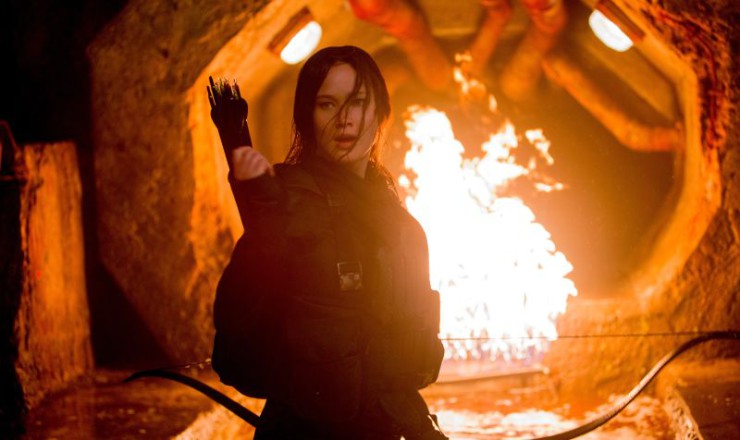
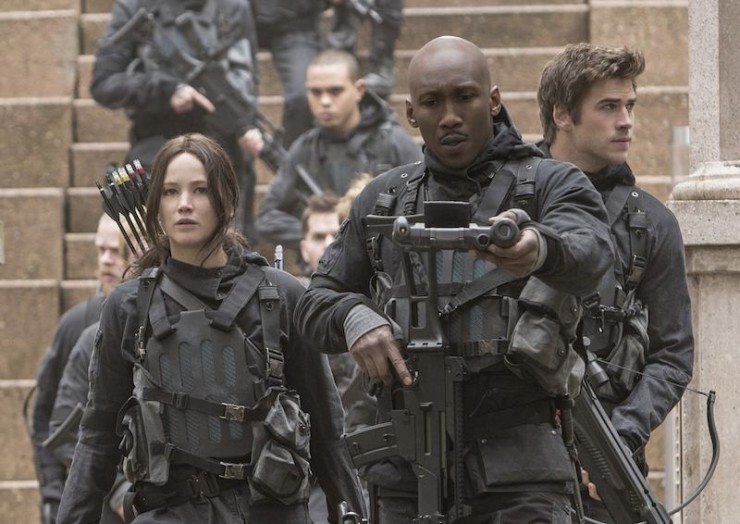
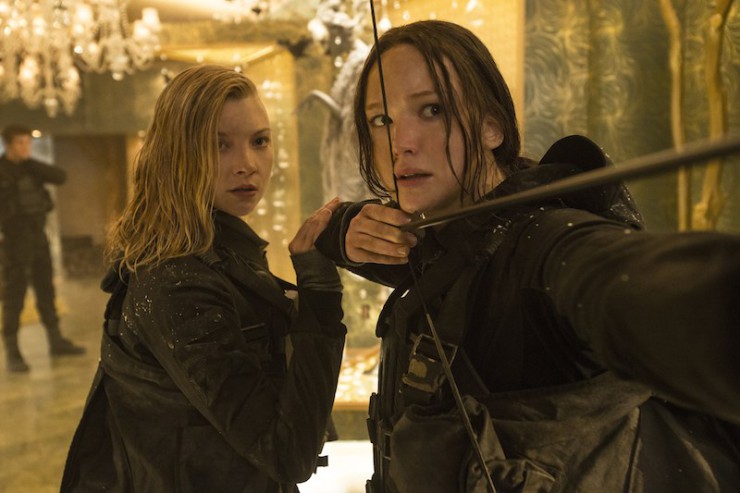
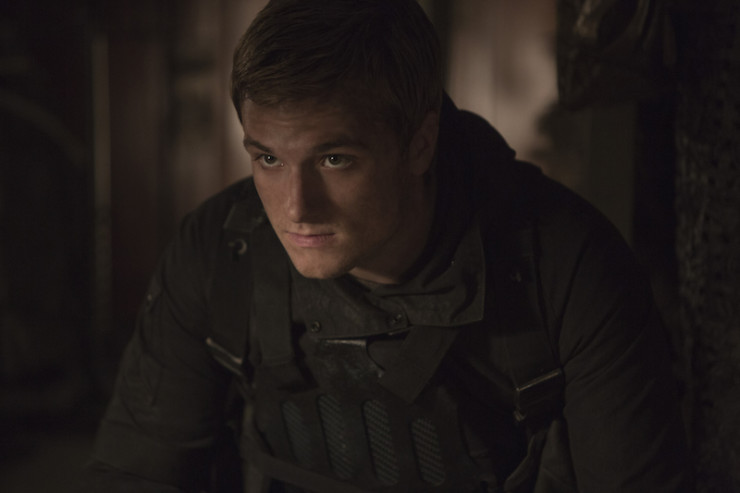
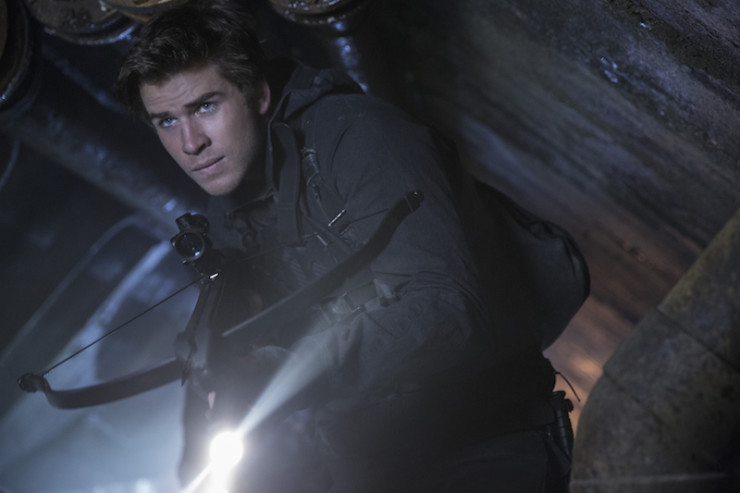
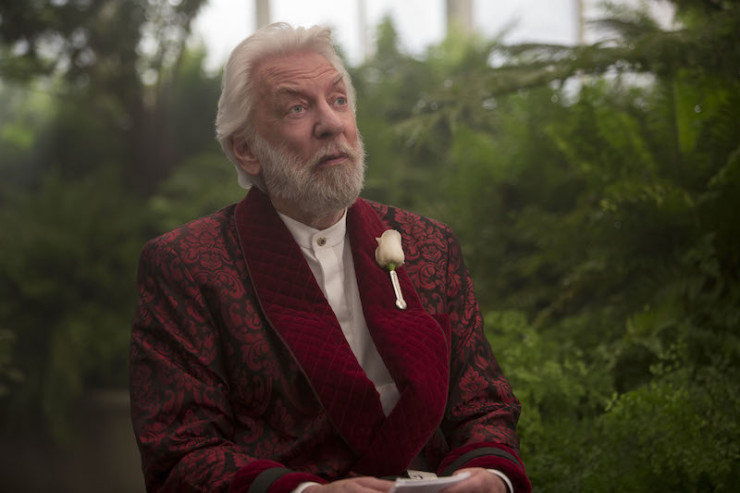
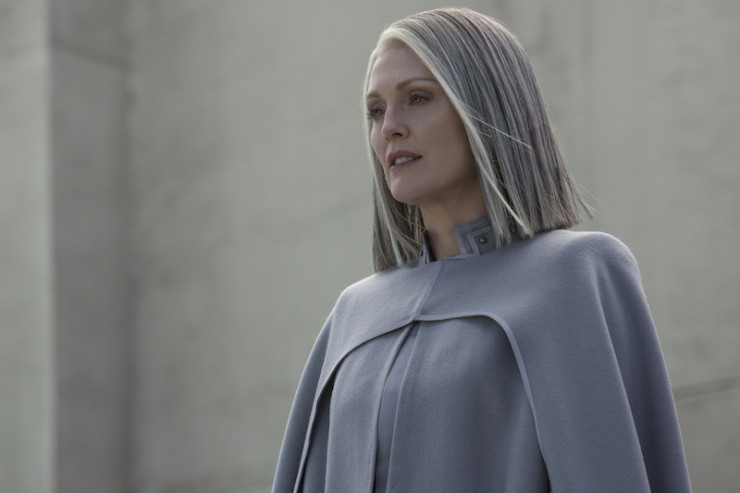
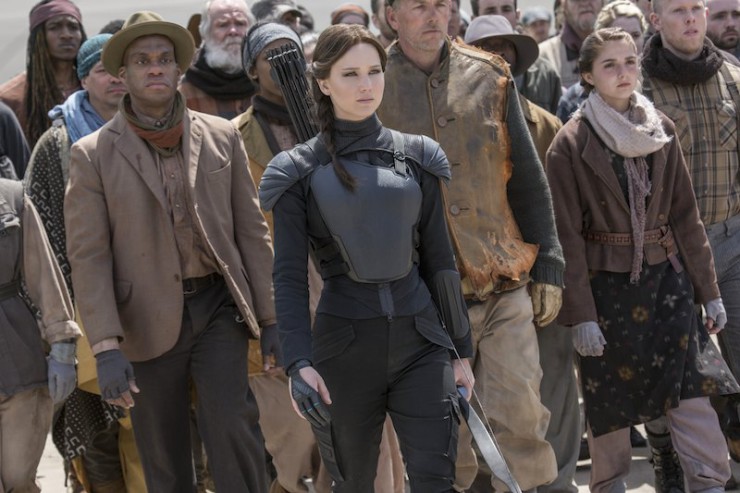
Haven’t seen the movie yet, so can’t react to the review as such – but FYI, in Part 1, Prim tells Katniss she is being trained to be a doctor, not a nurse. I believe that was true in the book but can’t check.
I also missed the focus on Katniss’s mental state after all she’s been through. Apart from that, I think the movie got most of the key moments right: the talk between Katniss and the other guy in 2, Boggs death, the parachutes scene (I actually felt worse for the other children), Snow and Katniss in the greenhouse, the debate over a new edition of the Games (the look Haymitch gave Katniss before voting was exactly like I’d imagined it when I read that scene) and, of course, the execution (my hands were shaking during that scene).
We saw it a few nights ago and I enjoyed it- it was what I expected/wanted from a movie expectation. I did greatly enjoy (in the book) the way we got a better look inside of Katniss’s head and the real trauma, but I had a feeling that would be cut from the movie. The movie hit he beats I wanted it to hit for the most part though. I loved Finnick, and he got to go out like a BAMF (I couldn’t help but wish he’d be spared by the adaptation) and I also noticed there were several parts in the movie where he was looking out for Peeta, trying to shore him up, etc. He just generally seemed like such a stand up guy with his own story.
The Buttercup scene also hit all the beats I wanted it to hit (I cried, non surprisingly)…I’m glad they went for actual gross sobbing.
I thought he final ‘real/not real’ scene and the epilogue were done really well too – but I’ve always been a fan of that type of story. A romance that is a soft place to fall (although the book does a better job of being in Katniss’s head and articulating exactly what about Peeta it is she needs) and hope for the future.
Also, they threw the Haymitch/Effie shippers a bone :)
On a more morbid note, I had a lot of depressing thoughts about violent revolutions, collaborators and the ‘average citizen’, and how we probably all have blood on our (collective) hands.
I enjoyed the Peeta/Gale scene (in the books as well) because of what you point out – they’re not trying to ‘win her’ but respecting it’s ultimately her choice.